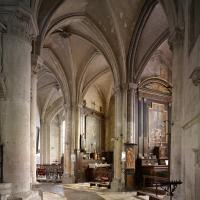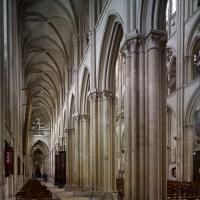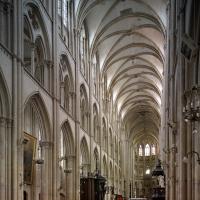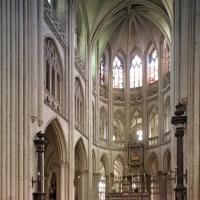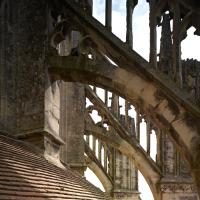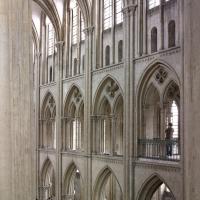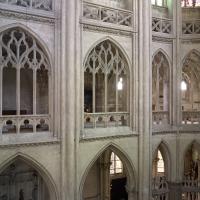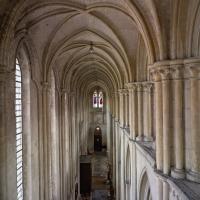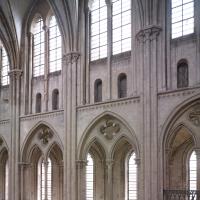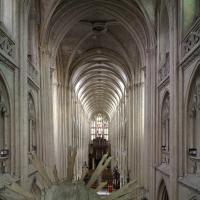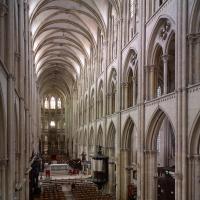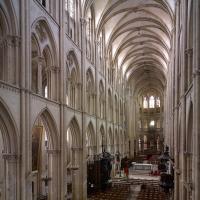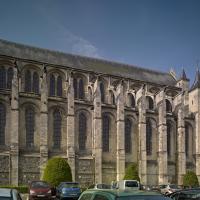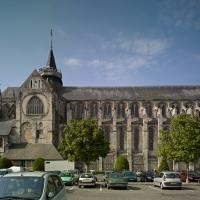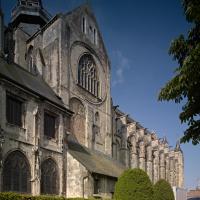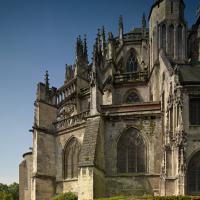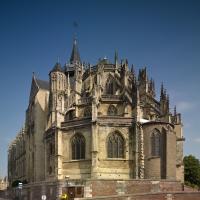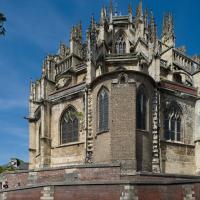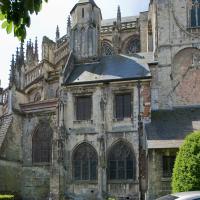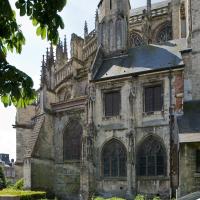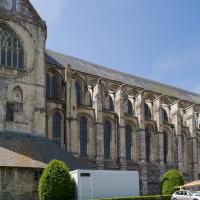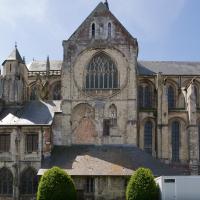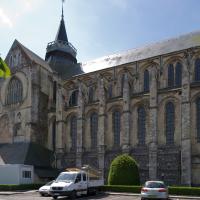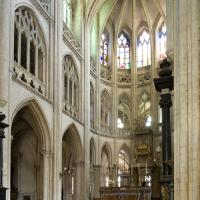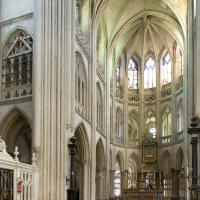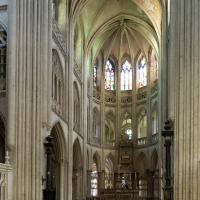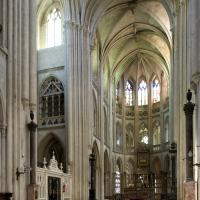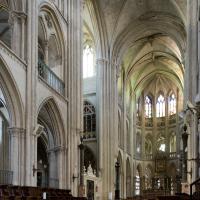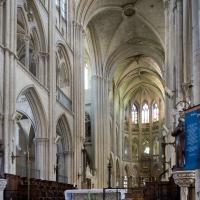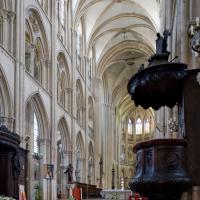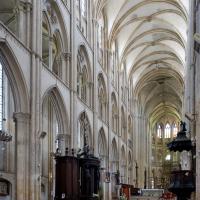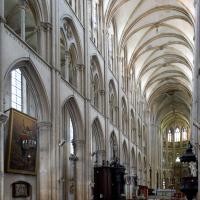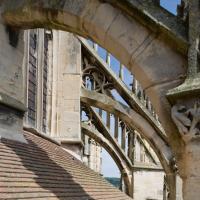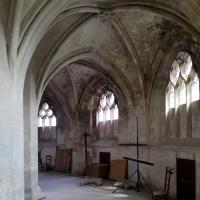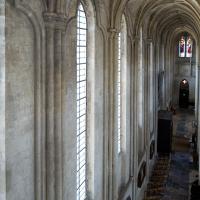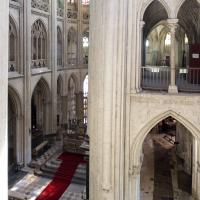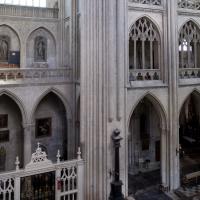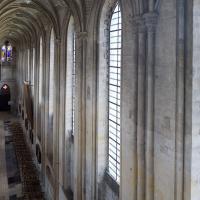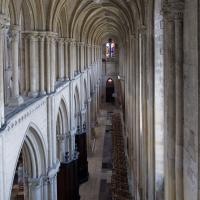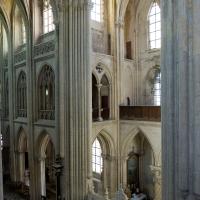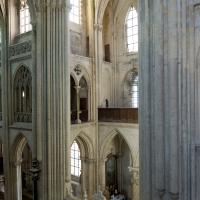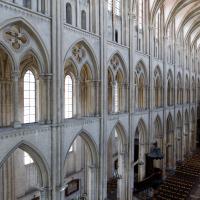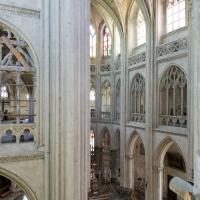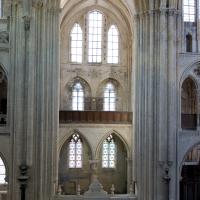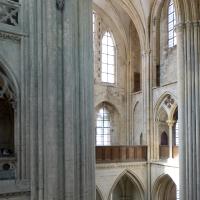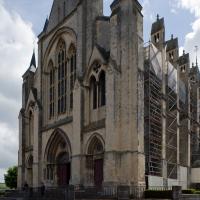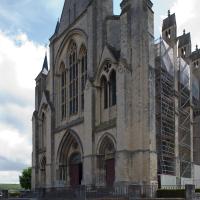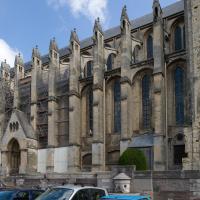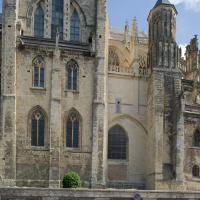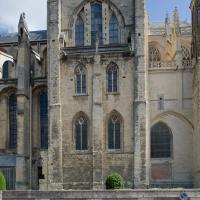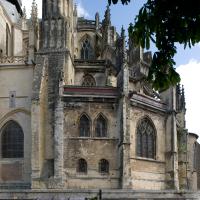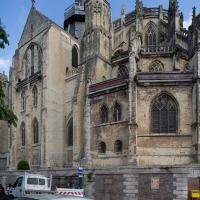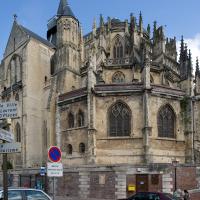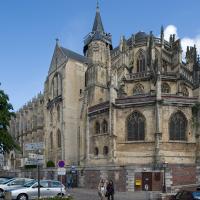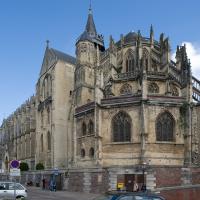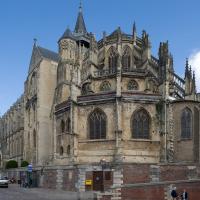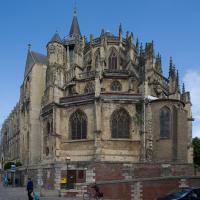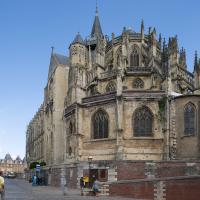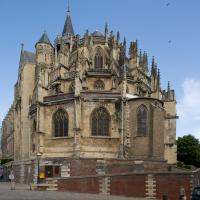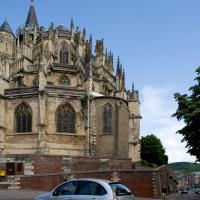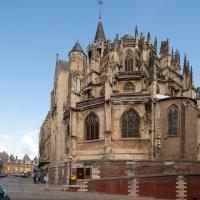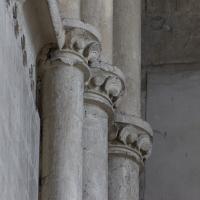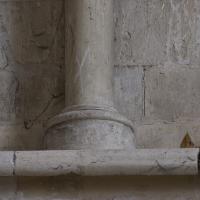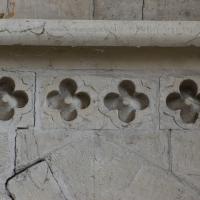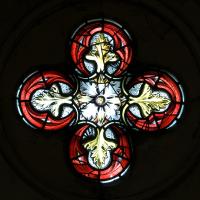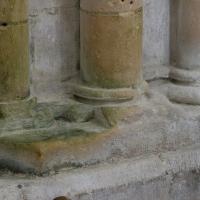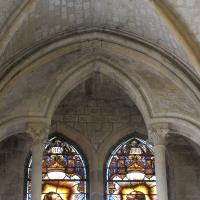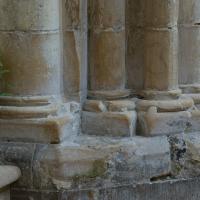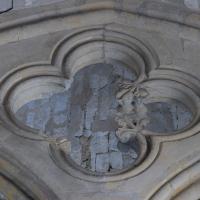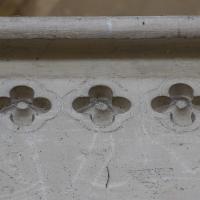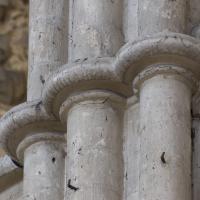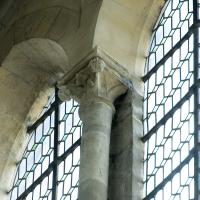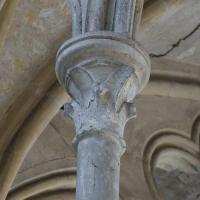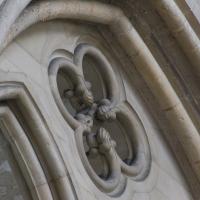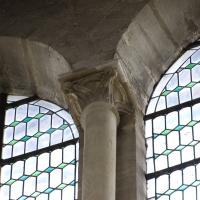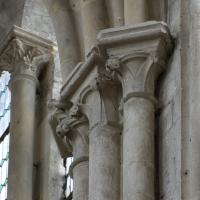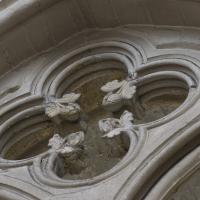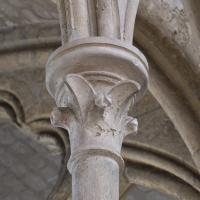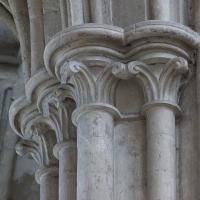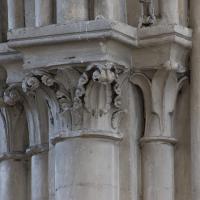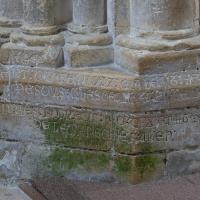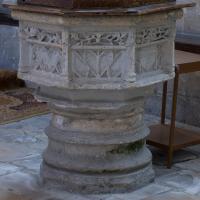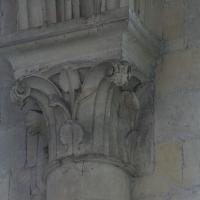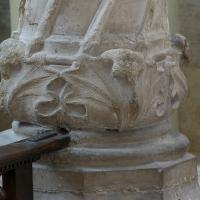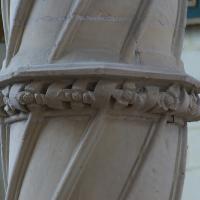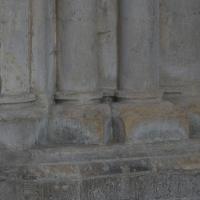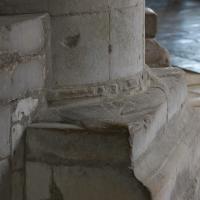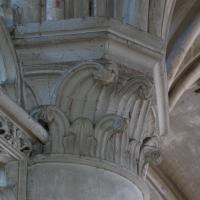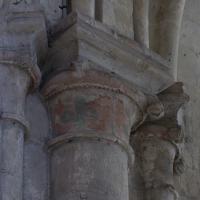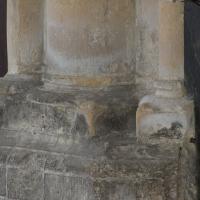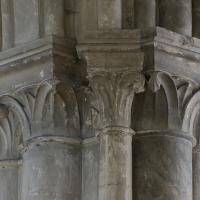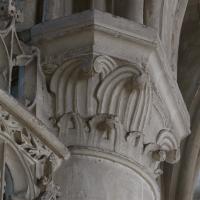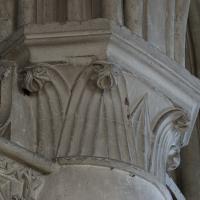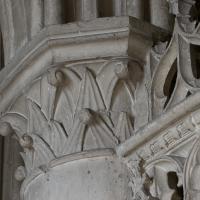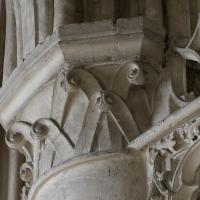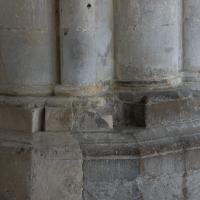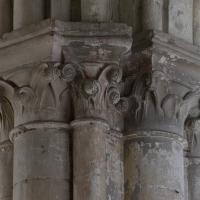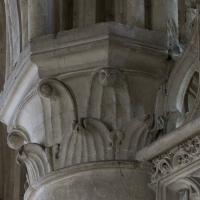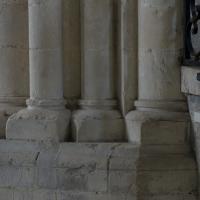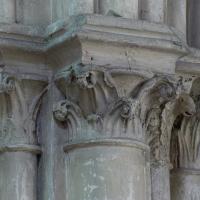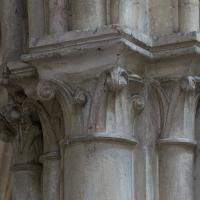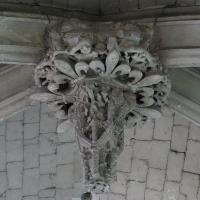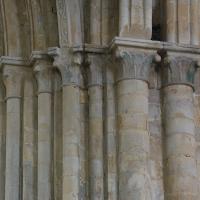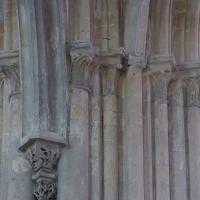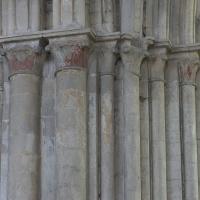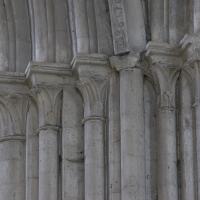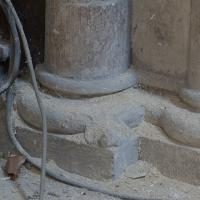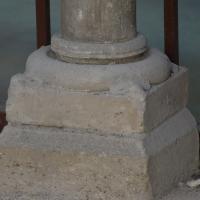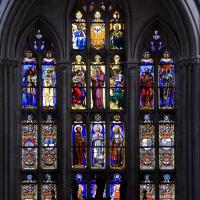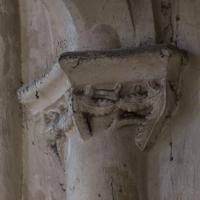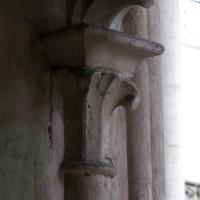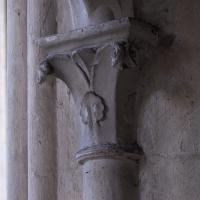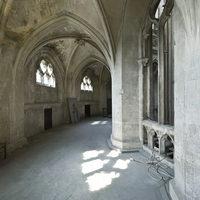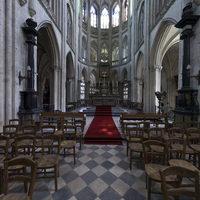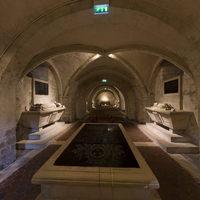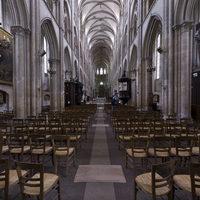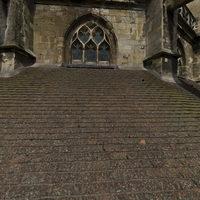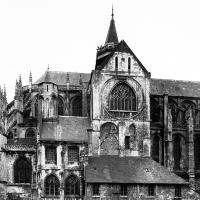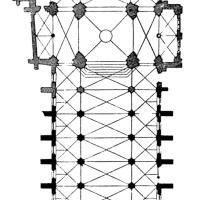Images
VR Tour
Notes
History
Guillaume, the first count of Eu, founded the church as an Augustinian priory dedicated to the Virgin in the early-eleventh century. The burial in 1181 of St. Lawrence O?Toole, archbishop of Dublin and familiar of Thomas Becket, transformed the church into a significant pilgrimage destination from the late-twelfth century onward. The subsequent interment of the counts of Eu provided the church the additional status of being an aristocratic necropolis during the late-fourteenth and fifteenth centuries.
Date
Begun ca. 1186
Plan
The church is a typical Latin cross consisting of an eleven-bay nave, two short transept arms, and a two-bay chevet terminating in a hemicycle with a polygonal ambulatory and seven radiating chapels. Simple quadripartite vault predominate throughout the building with the notable exception of the quinquepartite vaults located in the nave aisles. A raised crypt lying beneath the chevet, crossing, and two easternmost bays of the nave reflects the status of the building as a pilgrimage center in Upper Normandy.
Elevation
Both the nave and the chevet possess similarly-proportioned tripartite configurations, supported by thick upper walls and a system of exterior buttresses and flyers. The arcade and clerestory levels are of approximately equal height while the gallery level is somewhat shorter. The aisle bays in the chevet are vaulted at the level of the arcade and support a lit tribune gallery; those in the nave, however, are vaulted only at the level of the gallery itself and constitute what can be termed a ?double-height aisle? in section and a ?false gallery? in elevation (like the Rouen Cathedral nave). This latter arrangement permits the introduction of tall lancet windows in the lateral walls of the nave, and taken together with the ambitious sizes of the abandoned rose window in the north transept gable wall and the central window in the western frontispiece, it suggests that copious illumination was one of the chief objectives of the design.
Chronology
The relocation of the body of St. Lawrence to a newly-outfitted crypt in 1186 probably corresponds to the demolition of the old eleventh-century structure. The translation of his relics to the main body of the church in 1226 similarly marks the completion of the new chevet, transept arms, and two easternmost nave bays. Indeed, the continuity of the design suggests a relatively short building campaign, and the entire structure may have been finished around this time. A devastating fire in 1426 necessitated substantial reconstruction to both the interior and exterior of the east end. Post-medieval modifications and restorations have altered minor features of the building but left it largely intact.
Significance
Located on the fringe of Norman territory, Eu is a rare example of a purpose-built pilgrimage church erected during the Gothic period in the duchy. Similarities between its design and that of La Trinité at Fécamp, a long-standing devotional site, suggest that the latter church served as an influential model for the general character of the plan and elevation. Rouen Cathedral also may have provided limited inspiration, especially for the ?false gallery? of the nave, but nature of this relationship is murky at best. What Eu represents, in the end, is the persistence of local ingenuity in the face of mounting political and cultural consolidation associated with Capetian expansion. The liminal cultural environment that the church occupied seems to have provided its designers the conceptual space necessary to create architectural solutions favoring innovation rather than replication.
Zachary Stewart
Location
Bibliography
"Chronique des Comtes d'Eu," in Recueil des Historiens des Gaules et de la France, ed. M. Bouquet et al, vol. 23 (Paris, 1869-1904), pp. 439-48.
Coutan, F., "Notre-Dame-et-Saint-Laurent," Congrès archéologique de France, vol. 99 (1936), pp. 388-412.
Grant, L., Architecture and Society in Normandy 1120-1270 (New Haven and London, 2005).
--------, ?Gothic Architecture in Normandy, c. 1150-c.1250? (PhD dissertation, University of London, 1987).
Legris, A., Life of St. Laurence O?Toole, Archbishop of Dublin (1128-1180) (Dublin, 1914).
--------, L?Église d'Eu et la chapelle du Collège (Paris, 1913).
Vitry, M. P., ?Tombeaux de l?Église Notre-Dame-et-Saint-Laurent,? Congrès archéologique de France, vol. 99 (1936), pp. 412-20.
ed. M. Bouquet et al, vol. 23 (Paris, 1869-1904), pp. 439-48.


